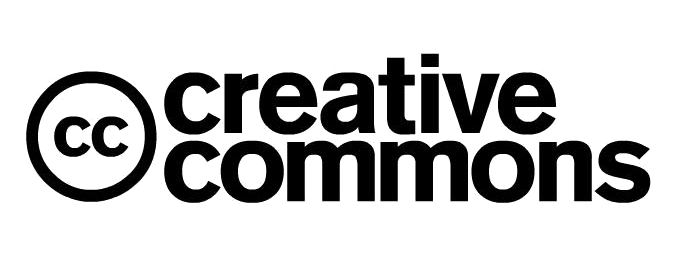Effects of ketamine and stress on the neurotrophin receptors expression
DOI:
https://doi.org/10.33910/2687-1270-2020-1-1-75-77Keywords:
ketamine, neurotrophin, SorCS1, SorCS3, BDNF, p75Abstract
Effects of a subanesthetic dose of ketamine and acute stress on the major (p75, Trkb, Trkc) and novel (Sorcs1, Sorcs2, Sorcs3) neurotrophin receptors and Bdnf gene expression in rats were examined. Adult male Wistar rats were treated with ketamine (15 mg/kg) or saline and half of each group was subjected to tail suspension test for 6 minutes, which was interpreted as an acute mild stressor. After an hour the total RNA was isolated from prefrontal cortex, midbrain and brainstem regions of each animal and mRNA expressions were analysed by real-time RT-PCR. The results showed different significant interactions between factors which were strongly dependent on the structure of the brain. Both subanesthetic doses of ketamine and acute mild stress caused changes in neurotrophin receptors and Bdnf gene expression in examined brain areas associated with depression. The obtained results allow to surmise that BDNF, SORCS1, SORCS3 and p75 receptors are involved in the ketamine-induced neuroplasticity and antidepressant activity.
References
Christiansen, G., Andersen, K., Riis, S. et al. (2017) The sorting receptor SorCS3 is a stronger regulator of glutamate receptor functions compared to GABAergic mechanisms in the hippocampus. Hippocampus, vol. 27, no. 3, pp. 235–248. PMID: 27935149. DOI: 10.1002/hipo.22689 (In English)
Glerup, S., Bolcho, U., Molgaard, S. et al. (2016) SorCS2 is required for BDNF-dependent plasticity in the hippocampus. Molecular Psychiatry, vol. 21, no. 12, pp. 1740–1751. PMID: 27457814. DOI: 10.1038/mp.2016.108 (In English)
Kavalali, E., Monteggia, L. (2015) How does ketamine elicit a rapid antidepressant response? Current Opinion in Pharmacology, vol. 20, pp. 35–39. PMID: 25462290. DOI: 10.1016/j.coph.2014.11.005 (In English)
Lanshakov, D. A., Sukhareva, E. V., Kalinina, T. S., Dygalo, N. N. (2016) Dexamethasone-induced acute excitotoxic cell death in the developing brain. Neurobiology of Disease, vol. 91, pp. 1–9. PMID: 26873551. DOI: 10.1016/j.nbd.2016.02.009 (In English)
Monyer, H., Burnashev, N., Laurie, D. et al. (1994) Developmental and regional expression in the rat brain and functional properties of four NMDA receptors. Neuron, vol. 12, no. 3, pp. 529–540. PMID: 7512349. DOI: 10.1016/0896-6273(94)90210-0 (In English)
Pałucha-Poniewiera, A., Podkowa, K., Pilc, A. (2019) Role of AMPA receptor stimulation and TrkB signaling in the antidepressant-like effect of ketamine co-administered with a group II mGlu receptor antagonist, LY341495, in the forced swim test in rats. Behavioural Pharmacology, vol. 30, no. 6, pp. 471–477. DOI: 10.1097/FBP.0000000000000471 (In English)
Savas, J. N., Ribeiro, L. F., Wierda, K. D. et al. (2015) The sorting receptor SorCS1 regulates trafficking of neurexin and AMPA receptors. Neuron, vol. 87, no. 4, pp. 764–780. PMID: 26291160. DOI: 10.1016/j.neuron.2015.08.007 (In English)
Shishkina, G. T., Kalinina, T. S., Bulygina, V. V. et al. (2015) Anti-apoptotic protein Bcl-xL expression in the midbrain raphe region is sensitive to stress and glucocorticoids. PLOS ONE, vol. 10, no. 12, article e0143978. PMID: 26624017. DOI: 10.1371/journal.pone.0143978 (In English)
Subkhangulova, A., Malik, A. R., Hermey, G. et al. (2018) SORCS1 and SORCS3 control energy balance and orexigenic peptide production. EMBO Reports, vol. 19, no. 4, article e44810. PMID: 29440124. DOI: 10.15252/embr.201744810 (In English)
Yu, X.-M., Fang, X.-Q., Jiang, X.-H. (2016) NMDA receptor internalization down-regulates NMDA receptormediated synaptic responses through the inhibition of remaining (non-internalized) surface NMDA receptors. Neurotransmitter, vol. 3, article e1192. (In English)
Downloads
Published
Issue
Section
License
Copyright (c) 2020 Elizaveta V. Shaburova, Dmitriy A. Lanshakov

This work is licensed under a Creative Commons Attribution-NonCommercial 4.0 International License.
The work is provided under the terms of the Public Offer and of Creative Commons public license Creative Commons Attribution 4.0 International (CC BY 4.0).
This license permits an unlimited number of users to copy and redistribute the material in any medium or format, and to remix, transform, and build upon the material for any purpose, including commercial use.
This license retains copyright for the authors but allows others to freely distribute, use, and adapt the work, on the mandatory condition that appropriate credit is given. Users must provide a correct link to the original publication in our journal, cite the authors' names, and indicate if any changes were made.
Copyright remains with the authors. The CC BY 4.0 license does not transfer rights to third parties but rather grants users prior permission for use, provided the attribution condition is met. Any use of the work will be governed by the terms of this license.







